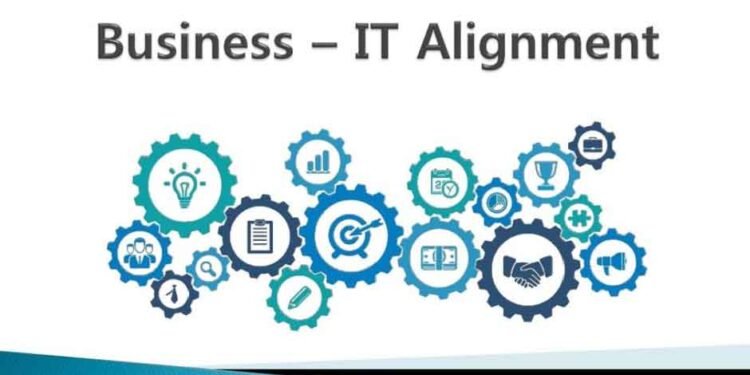Achieving alignment between business and IT is a difficult but necessary task for companies trying to enhance their operations. Business-IT alignment is the process of integrating technology projects with business objectives in order to increase efficiency, innovation, and competitiveness. It involves bridging the gap between technical capabilities and strategic goals in order to guarantee that IT investments are consistent with the larger goals of the firm.
While the route to achieve this alignment can be difficult due to competing priorities, communication barriers, and developing technologies, the benefits are significant. When business and IT operations work together, firms may increase productivity, streamline processes, make better decisions, and gain a competitive advantage in today’s digital economy. If you’re seeking expert guidance, IT Support Cambridge can be a valuable resource for navigating these complexities and ensuring successful IT alignment.
In this blog we will explore challenges and rewards of achieving business-IT alignment.
Challenges of Business-IT Alignment
-
Communication Barriers
Communication barriers are one of the most challenging things to achieving business-IT alignment. Misunderstandings, misinterpretations, and a lack of open communication channels can all restrict collaboration between business stakeholders and IT workers. This can cause delays in project completion, cost overruns, and, ultimately, an organization’s overall efficiency.
To overcome these barriers, both business and IT teams must establish open lines of communication, promote mutual understanding of goals and objectives, and engage in constructive conversations on a regular basis to ensure that everyone is on the same page. By addressing communication obstacles front on, organizations can improve alignment between their business and IT divisions, resulting in better operational performance and strategic objectives.
-
Cultural Differences
Cultural differences can pose significant challenges to business-IT alignment. When employees from different cultures collaborate, they may have different communication methods, problem-solving approaches, and expectations. These differences might result in misunderstandings, conflicts, and inefficiencies inside the organization.
Leaders must build an inclusive and respectful culture in which different points of view are recognized and integrated into decision-making processes. Businesses can encourage collaboration and creativity by proactively recognizing and addressing cultural differences, thereby improving their ability to connect business goals and IT strategies.
-
Rapid Technological Change
Rapid technology change makes it difficult to achieve business-IT alignment in organizations. Aligning company strategy with IT capabilities can be difficult due to the rapid speed of technological advancement. Businesses must constantly adapt to new technologies to remain competitive, but this can often lead to misalignment between the IT infrastructure and the overall goals of the organization.
To overcome this obstacle, firms must adopt a strategic approach to IT planning that considers the possible impact of technological improvements on their operations. Moreover, encouraging open communication and collaboration between business and IT departments can help to guarantee that technological innovations are effectively integrated into the broader business strategy.
-
Strategic Misalignment
Strategic misalignment between business and IT functions can pose significant challenges to achieving effective business-IT alignment. When the goals and objectives of the business are not in sync with the IT strategies and capabilities, it can lead to inefficiencies, missed opportunities, and hindered innovation. This disconnect often arises from a lack of communication, differing priorities, or inadequate understanding of each other’s needs.
Addressing strategic misalignment requires clear communication channels, collaborative planning processes, and a shared understanding of how technology can support overall business objectives. By bridging the gap between business and IT strategies, organizations can enhance their agility, competitiveness, and ability to leverage technology effectively for sustainable growth.
Rewards of Achieving Business-IT Alignment
-
Enhanced Operational Efficiency
Achieving Business-IT alignment can result in increased operational efficiency within an organization. When business goals and IT strategy align, processes become more efficient, communication improves, and resources are better utilized. This alignment enables quicker decision-making, smoother implementation of technical solutions, and lower operating expenses.
Companies can improve their workflows and productivity by encouraging collaboration between their business and IT teams. Moreover, the benefits of achieving Business-IT alignment go beyond increased efficiency to greater competitiveness and innovative capabilities in today’s quickly changing digital environment.
-
Improved Decision-Making
One of the most significant benefits of achieving business-IT alignment is better decision-making. When business goals and IT plans are in sync, organizations can make educated decisions that support their overall goals. By incorporating IT considerations into the decision-making process, businesses may use technology to collect data, evaluate patterns, and gain useful insights that can lead to more effective and timely decisions.
This alignment enables a smooth flow of information between departments, encouraging collaboration and ensuring that choices are well-informed and in line with the organization’s strategic direction. Additionally, improved decision-making is a fundamental benefit of effective business-IT alignment, which can drive organizational efficiency and innovation.
-
Competitive Advantage
Achieving business-IT alignment can give organizations a major competitive edge. Companies that connect their business goals and IT strategies can streamline operations, boost efficiency, and improve overall performance. Organizations that integrate IT activities with larger business objectives can adjust more swiftly to market changes, develop more effectively, and provide better customer experiences.
This alignment also promotes collaboration among various divisions within the firm, resulting in better decision-making and, ultimately, generating long-term growth and success in today’s competitive corporate world.
-
Increased Agility and Innovation
Achieving business-IT alignment can lead to a variety of benefits, including enhanced agility and innovation inside the organization. When business goals and IT strategy align, it enables faster response to changing market conditions and consumer needs. This alignment generates an innovative culture in which IT solutions are used to drive business growth and competitive advantage.
Businesses can better respond to evolving technology and grab growth possibilities by reducing processes and improving departmental communication. In addition, collaboration between business and IT divisions enables increased agility and constant innovation, preparing the organization for long-term success in a dynamic marketplace.
Conclusion
For a company to do well, it’s really important for the business side and the IT department to work closely together. This ensures that technological efforts align with what the business wants to achieve. There are certain challenges, such as not communicating effectively or keeping up with new technology, but having everyone on the same page and implementing flexible IT plans can help overcome these obstacles. When firms get this right, they notice a lot of positive results, such as increased productivity and innovation in their projects. Regular checks to ensure everything is running as it should means both small firms and big corporations benefit from staying aligned this way. To get more insights, contact the IT Managed Services Boston team for further assistance.












